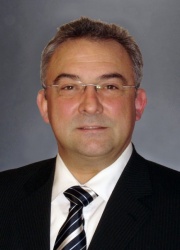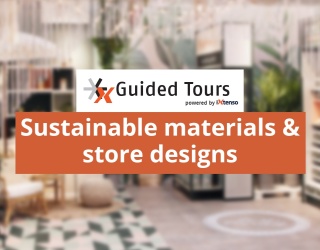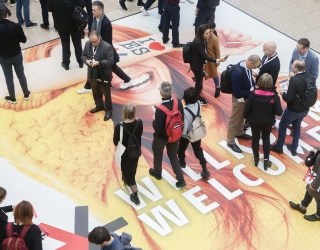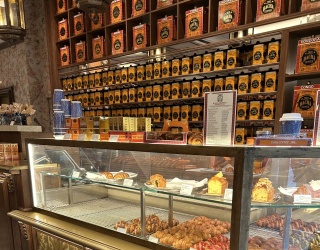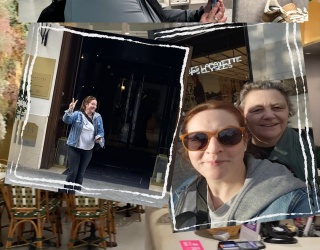LEDs are becoming more and more important for store designs and with that they also find their way into shop window displays. Our questions on this topic were answered by Michael Flögel, Sales Manager for Lighting Systems in Commercial-, Retail- and Interior Construction at Elektra. For more than 30 years the company from Enger in Eastern Westphalia Germany develops and produces lighting systems and OEM services for kitchens, furniture, household appliances and buildings. Flögel does not believe that neon lamps now have become obsolete and concedes that LEDs cannot display all colors equally well just yet. Nevertheless the way he sees it, many characteristics make a case for the light-emitting diodes.
LEDs will be a big trade fair topic this year at the EuroShop. What plays in favor of these light-emitting diodes?
The possible applications and variety of LED technology and LED products have strongly advanced over the past few years, and as a result LED lighting is increasingly more important. The main reason for the use of LED is the longevity of these products as well as the low energy consumption. The life cycle is approximately 20,000 hours. And then they still provide about 70 percent of their original energy output. We offer LED products in the luminous colors warm-white (3,000K) to daylight white (6,400K). Novel surface mount LED lights offer a high degree of efficiency. In beam direction, compared to conventional illumination techniques LEDs produce practically no heat emission. In addition, LEDs are shock- and switch proof, which means vibrations or frequent on/off switching cannot harm them.
Have the good old neon lights now become obsolete?
No, not at all! Fluorescent light fixtures with well-engineered electronic control gear have a very good cost-performance ratio for many applications. Further developments like fluorescent lamps with a diameter of just 7 millimeters – so-called T2 lamps – follow the trend for smaller lamps that provide a lot of light in a small area. Aside from that, fluorescent lights still have a higher color rendering index than LED light sources, which currently do not match the familiar warm and “natural” light just yet.
Still not at all in the public’s attention right now are technologies like for instance low-temperature plasma technology. With it you can design lamps that are dimmable between 0 and 100 percent, whose color temperature can be continuously adjusted between 2,000 and 8,000 Kelvin and reach a life cycle of up to 80,000 hours.
Due to its high blue content, LED lighting is perceived as cold. Is this problem solved by now?
The blue content is only dominant in high luminous colors like 6,000 Kelvin for example. In the early LED stages, these luminous colors were right on trend. Since the use of luminous colors of 3,000 to 4,000 Kelvin, the blue content has become very low.
For which products do you recommend LED lighting and for which products are other lamps better?
LED lighting is especially well suited for temperature sensitive products such as foods or cosmetics, since LEDs don’t emit UV- and Infrared radiation. Using them in refrigerated display cases also makes sense, since LEDs are “super comfortable“ in sub-zero temperatures and their life cycle is extended. But this does not mean that the use of LEDs is justified in all cases. In recent years a sort of “LED hysteria“ has erupted, which led to LEDs not always being used sensibly. Customers should consult with companies that really understand lighting technology, lamps and lighting.
So far LEDs were small punctiform light sources. In shopfitting you often want flat lighting. What solution are there available?
Today we are able to offer lighting with the latest surface mount LED technology in many different shapes – for example linear without any visible connecting leads over several meters, round or square. LED surface mount lamps feature an even, soft lighting ambiance without distracting luminous spots. The light output is 80 lumens per watt – at 6,400K.
Being eco friendly becomes more and more important in shopfitting. What does the ecological balance sheet of LEDs look like?
This question can only be reliably answered by independent testing institutes, because all processes from development to manufacturing all the way to disposal need to be considered here.
Enclosed shop window displays with lighting or look-through windows offering views into a well-lighted store – what is in demand at the moment?
Both are equally sought after. The applications are versatile and depend on the particular industry sector and showcased products.
LEDs lend themselves to special lighting of individual objects in the window. How do you conceal the cables?
With our mini connector system, Elektra offers one of the smallest solutions for connecting lamps in high- and low voltage ranges available in today’s market. Connectors with a diameter of only 7 millimeters are simply connected to the corresponding distribution system. This enables a quick and easy installation with significantly reduced assembly compared to traditional systems and opens up many possible applications with nearly invisible cable routing.
What will EuroShop trade fair visitors get to see at your booth?
We show classic solutions in the fluorescent lighting area such as T5-, T2- and GX53 lights. In addition, visitors to our booth can marvel at lights with radial LEDs as well as the latest surface mount LED technology in various applications. The showcased product portfolio also includes miniaturized connector systems for the low-and high voltage ranges, which significantly simplify the connection of lighting for the user.
What trend do you see in lighting? For example, what do you expect in terms of OLEDs over the next few years?
The design and development of OLED is very interesting, but this development will still take some time. Prototypes today achieve a performance of 25 Lumen/Watt and in research projects 60 Lumen/Watt. Today’s life cycle of 5,000 hours is also not sufficient enough.
René Schellbach, iXtenso.com

